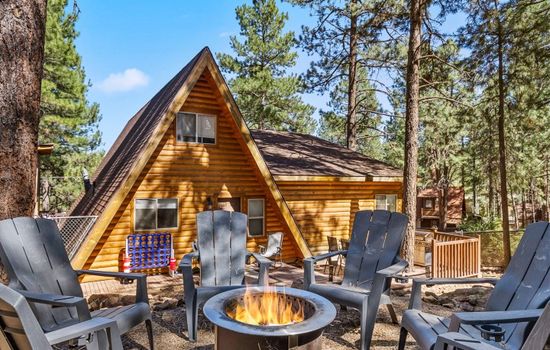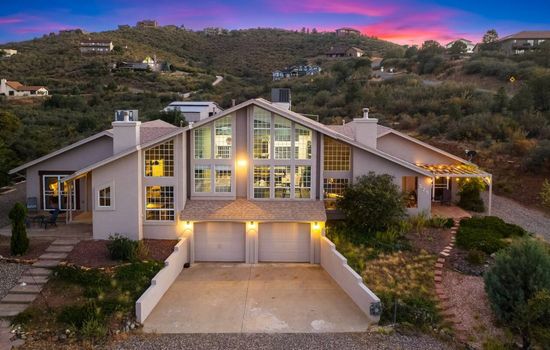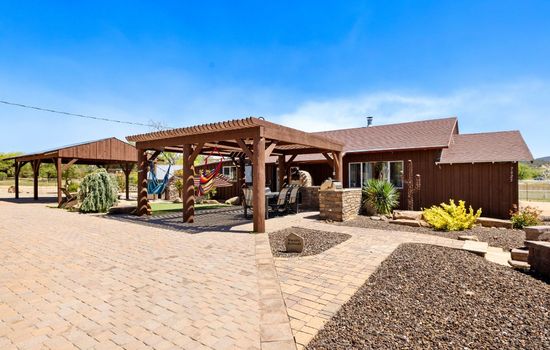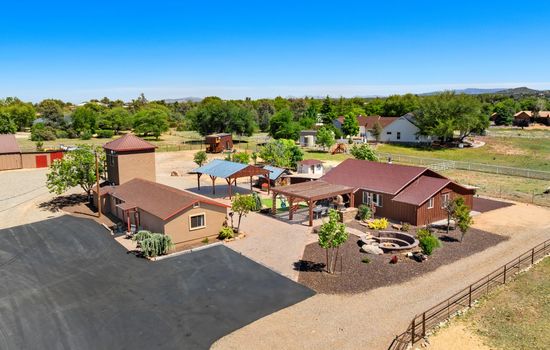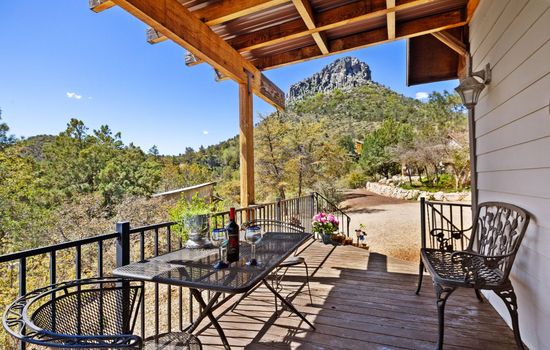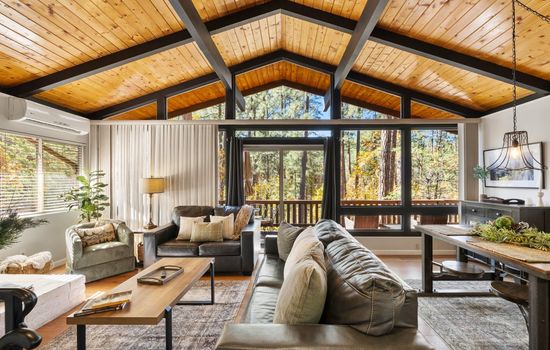The Sunset Crater Volcano Visitor Center is open daily from 9:00 AM to 4:30 PM, except on Thanksgiving, Christmas, and New Year’s Day.
The entrance fee at Sunset Crater Volcano National Monument is $25 for a private vehicle, $20 for a motorcycle, and $15 per person. An annual pass is $40. The fee includes access to Wupatki National Monument for 1-7 days.
From Flagstaff, take US 89 north for 12 miles, then turn right on the Sunset Crater-Wupatki Loop road and continue 2 miles. Immerse yourself in a volcanic landscape of cinders and lava flows, set amidst a ponderosa pine forest, offering panoramic vistas and unique hiking trails.
Parking lots are near the Visitor Center and crater, with no overnight parking. Cars, RVs up to 42 feet, and motorcycles are accommodated. A $25 entrance fee per car is required; no additional parking fees.
Accessibility & permits
Emergency
- Cell service availability:Partial
Information not accurate?
Help us improve by making a suggestion.
Sunset Crater Volcano National Monument, situated approximately 20 miles northeast of Flagstaff in northern Arizona, is a testament to the region’s volatile geological past. This monument, established by presidential proclamation in 1930, protects 3,040 acres of the Colorado Plateau’s most recent volcanic eruption. The landscape is dominated by the 1,120-foot-high cinder cone of Sunset Crater, its iron-rich cinders glowing in shades of red that inspired its namesake.
The area is a wonderland of rock and lava, with the Bonito and Kana-a lava flows stretching out like black ribbons across the terrain. Hiking trails such as the Lenox Crater Trail and the Bonito Vista Trail offer breathtaking views of the crater and the surrounding volcanic field. The trails skirt the substantial Bonito Lava Flow, where hardened lava has devastated the forest, yet created an intriguing ice cave now closed to the public.
Despite the stark, inhospitable appearance, the monument is gradually reverting to life. Pines, aspen trees, desert shrubs, and wildflowers have begun to reclaim the land, providing unique habitats for a variety of wildlife. The Sunset Crater Beardtongue, a rare flower, is one of the many flora that call this place home.
In the spring, wildflowers bloom vibrantly against the backdrop of volcanic ash and cinder, while summer brings a serene calm to the area. Fall and winter introduce a serene quiet, with snow often covering the black lava flows, creating a striking contrast.
Visitors can explore the monument’s dramatic geologic features and experience the profound impact of volcanic activity on the local ecosystem. While hiking to the top of Sunset Crater is not permitted, the views from the base are nothing short of spectacular. For those seeking an immersive experience, local outfitters and guides offer insights into the monument’s geological and historical significance, making every visit a memorable and enriching one.
- Area (mi²)
- 4.8
- Annual visitors
- 161 000
- Established year
- 1930
Top 3 Facts about Sunset Crater Volcano National Monument
The eruption covered almost 2300 square kilometers with lava and ash, incinerating the surrounding landscape and significantly altering the local environment. The cone itself is about 300 meters high and has a 300-foot-deep crater at its top.
This volcanic landscape is home to a diverse array of life, with ponderosa and pinyon pines, aspens, and junipers creating a rich habitat. Here, Steller jays and various bird species thrive, while jackrabbits and pronghorn antelope roam the grasslands. Lower elevations host coyotes, bobcats, lizards, and snakes, showcasing a vibrant tapestry of wildlife against a backdrop of cinder and lava fields. Unique flora and fauna flourish, making this a captivating destination for nature enthusiasts.
At the foot of the San Francisco Peaks, a landscape transformed by a volcanic eruption around 1085 AD, stands a 340-meter-high cone, its black lava flows now a stark contrast to the surrounding lush ponderosa pine forests. The Bonito Lava Flow, a hardened, ebony expanse, skirts the hiking trails, while the crater’s peak once spewed an ash and lapilli blanket over 2,100 square kilometers. This dramatic terrain, with its unique cinder cones and volcanic formations, offers a surreal hike through a natural history etched in stone and earth.
Family programs
- Junior Ranger
- Ranger-led Tours
- Self-guided Tours
- Scavenger Hunts
Travel Tips
Plan Ahead
Plan a few days in late spring to avoid summer heat. Drive the 34-mile scenic loop, park at designated areas, and visit the visitor center for maps and stamps. Wear sturdy shoes for trails, bring water and snacks, and rest often. Enjoy elk and deer sightings at dawn or dusk.
Pack Appropriately
Pack layers for drastic temperature swings, sturdy hiking boots, a wide-brimmed hat, sunscreen, and a rain jacket. Bring a puffy jacket and extra batteries for headlamps if camping. Don’t forget electrolytes and a first aid kit. Adjust gear based on the season and length of your stay.
Respect Wildlife
Tread lightly to preserve unique flora and fauna. Avoid disturbing wildlife, especially during breeding seasons. Stay on trails, and respect fragile volcanic terrain. Bring water, wear layers for changing weather, and leave no trace.
Stay Informed
Stay on marked trails, avoid cliffs and ledges, and watch for changing weather. Check fire restrictions and park rules. For emergencies, call 911 or park rangers.
Seasons
Explore in spring when temperatures rise to the 60s and 70s, with mild weather. Witness the scenic loop’s blooming wildflowers. No specific spring events, but ideal hiking conditions make it a perfect time to immerse in volcanic landscapes and lava flows. Pets restricted to parking areas.
Experience summer’s warm nights (70s-80s°F) under star-studded skies from May to July. Attend Summer Night Sky Events, with telescopes and guided stargazing, amidst a unique volcanic landscape. Ideal for outdoor enthusiasts, despite occasional heat.
Visit in fall, when crisp temperatures (40s-60s°F) and golden light enhance the volcanic landscape. Enjoy the scenic loop or hiking trails through ponderosa pines. No special events, but ideal weather makes it a perfect time to explore. Pets restricted to parking areas.
Winter months bring alternating snow and mild weather, with temperatures ranging from freezing to mild. Expect crisp nights and potential heavy snowfall, making it a serene and less crowded time to visit, ideal for those seeking a tranquil winter landscape.
Information not accurate?
Help us improve by making a suggestion.
Where to stay
Frequently Asked Questions
Ready to dive into what Sunset Crater Volcano National Monument has to offer? Let’s tackle some of the burning questions you might have as you plan your visit!
-
The closest city to Sunset Crater Volcano National Monument is Flagstaff, Arizona, which is about 12 miles to the south. You can reach the monument by taking US 89 north from Flagstaff for 12 miles and then turning right on the Sunset Crater-Wupatki Loop road.
-
You can bring your dog, but only on the paved areas and short trails. Dogs are not allowed on most trails, but they can be taken into the nearby Coconino National Forest. Leashed pets are permitted on paved roads and some designated areas.
-
You can’t park an RV inside the monument, but you can at Bonito Campground across the street, which is open from late May to mid-October and allows RVs and trailers up to 42 feet long. The roads to the monument are paved and suitable for RVs. Generators are allowed from 6 am to 10 am at the campground.
-
The best thing to see is the scenic drive up Montezuma Pass, which offers 360-degree views of the San Pedro River Valley and San Rafael Valley. This pass is significant because it was part of the route Francisco Vásquez de Coronado’s expedition took from 1540-1542 in search of the Seven Cities of Gold. The area also features a visitor center with detailed history about Coronado’s expedition and its cultural impact.

